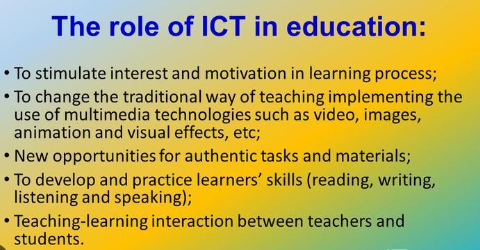In today’s digital era, Information and Communication Technology (ICT) solutions have become indispensable for organizations seeking to streamline operations, enhance productivity, and drive innovation. From cloud computing and cybersecurity to data analytics and artificial intelligence, the ICT landscape is vast and diverse, offering a multitude of solutions to address a wide range of business challenges. In this comprehensive guide, we’ll explore the process of mapping out ICT solutions, from identifying business needs and evaluating technologies to implementing and optimizing solutions for maximum impact.

Understanding ICT Solutions
ICT solutions encompass a broad spectrum of technologies, tools, and services designed to facilitate communication, information management, and digital transformation within organizations. These solutions play a critical role in enabling businesses to stay competitive, agile, and responsive in today’s rapidly evolving digital landscape.
Categories of ICT Solutions
ICT solutions can be categorized into several key areas, including:
- Infrastructure Solutions: Encompassing hardware, software, and networking technologies to support IT infrastructure, data centers, and network connectivity.
- Communication Solutions: Including email, VoIP, video conferencing, and collaboration tools to facilitate communication and collaboration among employees.
- Security Solutions: Covering cybersecurity measures, such as firewalls, antivirus software, encryption, and threat detection, to protect data and systems from cyber threats.
- Data Management Solutions: Including database management systems, data warehouses, and data analytics tools to collect, store, and analyze data for insights and decision-making.
- Cloud Solutions: Providing on-demand access to computing resources, storage, and applications through cloud-based platforms and services.
Mapping Out ICT Solutions
Mapping out ICT solutions involves a systematic process of identifying business needs, evaluating available technologies, and aligning solutions with organizational goals and objectives. Here’s a step-by-step guide to help you navigate this process effectively:
Assess Business Needs
Begin by conducting a comprehensive assessment of your organization’s business needs, challenges, and goals. Identify areas where ICT solutions can add value and address pain points, such as improving efficiency, reducing costs, enhancing security, or driving innovation.
Define Requirements
Based on your assessment, define specific requirements and objectives for your ICT solutions. Consider factors such as scalability, compatibility, security, and regulatory compliance when outlining your requirements.
Research Available Technologies
Research available ICT technologies and solutions that align with your requirements and objectives. Explore different vendors, products, and services, and evaluate their features, capabilities, and suitability for your organization.
Evaluate Costs and ROI
Consider the costs associated with implementing and maintaining ICT solutions, including upfront expenses, ongoing subscription fees, and potential ROI. Conduct a cost-benefit analysis to determine the financial viability and potential return on investment of each solution.
Develop a Roadmap
Develop a roadmap for implementing and integrating ICT solutions into your organization. Define key milestones, timelines, and resource requirements for each phase of the implementation process.
Implementing ICT Solutions
Once you’ve mapped out your ICT solutions, it’s time to proceed with implementation. Here are some best practices to ensure a smooth and successful implementation:
Plan and Prepare
Thoroughly plan and prepare for the implementation process, including coordinating with stakeholders, allocating resources, and communicating expectations. Develop a detailed implementation plan outlining roles, responsibilities, and timelines for each task.
Test and Validate
Before deploying ICT solutions in a production environment, conduct thorough testing and validation to ensure functionality, performance, and compatibility. Identify and address any issues or discrepancies through rigorous testing and troubleshooting.
Train and Educate
Provide comprehensive training and education to employees on how to use and leverage ICT solutions effectively. Offer workshops, seminars, and online resources to familiarize users with the features, functionalities, and best practices of the new technologies.
Monitor and Optimize
Continuously monitor and evaluate the performance of ICT solutions post-implementation. Gather feedback from users, track key metrics and KPIs, and identify areas for improvement or optimization to maximize the value and impact of the solutions.
Conclusion: Navigating the Digital Terrain
Mapping out ICT solutions is a complex but essential process for organizations. For those looking to harness the power of technology to drive success and innovation. By assessing business needs, defining requirements, researching available technologies, and developing a roadmap for implementation, organizations can navigate the digital terrain effectively and leverage ICT solutions to achieve their goals and objectives. With careful planning, strategic decision-making, and continuous optimization, organizations can stay ahead of the curve and thrive in today’s dynamic and competitive business landscape.











